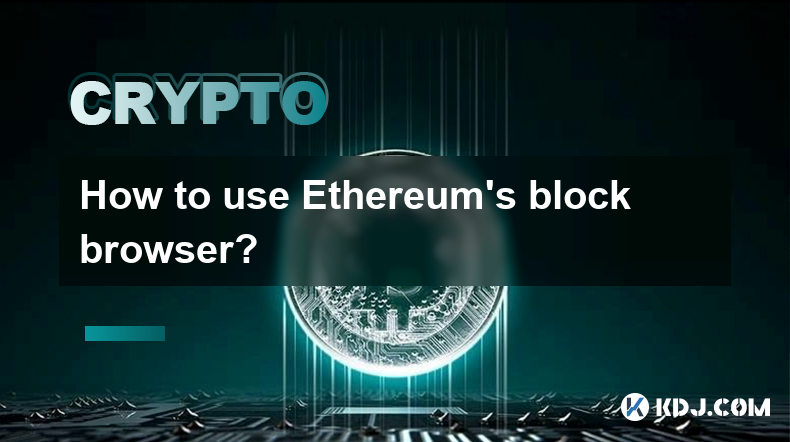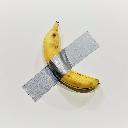-
 Bitcoin
Bitcoin $96,597.0979
2.11% -
 Ethereum
Ethereum $1,804.6867
1.92% -
 Tether USDt
Tether USDt $1.0002
0.02% -
 XRP
XRP $2.1161
-0.36% -
 BNB
BNB $598.4182
0.07% -
 Solana
Solana $145.2970
1.13% -
 USDC
USDC $1.0001
0.00% -
 Dogecoin
Dogecoin $0.1695
1.54% -
 TRON
TRON $0.2463
0.42% -
 Cardano
Cardano $0.6601
1.03% -
 Sui
Sui $3.2635
1.42% -
 Chainlink
Chainlink $13.5009
0.35% -
 UNUS SED LEO
UNUS SED LEO $8.7098
-0.02% -
 Avalanche
Avalanche $19.1267
-2.75% -
 Stellar
Stellar $0.2576
0.93% -
 Shiba Inu
Shiba Inu $0.0...01261
1.28% -
 Toncoin
Toncoin $2.9844
-0.67% -
 Hedera
Hedera $0.1730
0.19% -
 Bitcoin Cash
Bitcoin Cash $360.0948
0.85% -
 Hyperliquid
Hyperliquid $20.8398
1.13% -
 Litecoin
Litecoin $88.1330
6.67% -
 Polkadot
Polkadot $3.8861
-0.99% -
 Dai
Dai $1.0003
0.01% -
 Monero
Monero $281.5023
-0.76% -
 Bitget Token
Bitget Token $4.2361
-1.34% -
 Ethena USDe
Ethena USDe $1.0005
0.01% -
 Pi
Pi $0.5779
-0.26% -
 Pepe
Pepe $0.0...08054
2.91% -
 Bittensor
Bittensor $354.3024
-1.31% -
 OKB
OKB $50.7764
0.44%
How to use Ethereum's block browser?
Ethereum block explorers like Etherscan and Blockscout offer transparent access to blockchain data. Search by transaction hash, address, or block number to view details including gas fees, transaction history, and token transfers, aiding in network analysis and security.
Mar 07, 2025 at 03:24 am

Key Points:
- Understanding the purpose of an Ethereum block explorer.
- Navigating the interface of popular Ethereum block explorers like Etherscan and Blockscout.
- Searching for transactions, addresses, and blocks.
- Interpreting data presented on the explorer, including transaction details, gas fees, and block information.
- Utilizing advanced features for deeper analysis.
How to Use Ethereum's Block Browser
Ethereum block explorers are invaluable tools for anyone interacting with the Ethereum network. They provide a transparent and publicly accessible record of all transactions, blocks, and addresses on the blockchain. Understanding how to use them is crucial for developers, investors, and anyone curious about the inner workings of Ethereum.
Choosing an Explorer:
Several reputable Ethereum block explorers exist, each with slightly different interfaces and features. Popular options include Etherscan and Blockscout. Both offer similar core functionalities, but you might find one more user-friendly than the other. The choice largely depends on personal preference.
Basic Navigation: Searching for Transactions
To search for a specific transaction, you'll typically need its transaction hash (TX hash). This is a unique alphanumeric identifier assigned to each transaction. Simply paste the TX hash into the search bar of your chosen explorer. The results will display comprehensive details about the transaction, including sender and receiver addresses, the amount of ETH transferred, gas fees, and the timestamp.
Searching for Addresses:
Similarly, you can search for information about specific Ethereum addresses. Enter the address into the search bar, and the explorer will show all transactions associated with that address, both incoming and outgoing. This allows you to track the history of an address and its interactions on the network. This is crucial for monitoring wallet activity.
Exploring Blocks:
Block explorers also provide detailed information about individual blocks. Each block contains a batch of transactions. Searching by block number or hash reveals the transactions included, the timestamp of the block's creation, and the miner who validated it. This is important for understanding the chain's growth and activity.
Understanding Transaction Details:
Once you've located a transaction, the explorer will present detailed information. This includes the sender's address, the recipient's address, the amount of ETH or tokens transferred, the gas used, the gas price, and the transaction fee. Understanding these metrics is critical for assessing transaction costs and efficiency.
Interpreting Gas Fees:
Gas fees are the transaction fees paid to miners for processing transactions on the Ethereum network. The gas used represents the computational resources required for a transaction. The gas price is the cost per unit of gas. Higher gas prices generally lead to faster transaction confirmations.
Advanced Features:
Many explorers offer advanced features, such as the ability to filter transactions by various parameters, create custom dashboards, and analyze historical trends in network activity. These features are particularly useful for developers and those conducting in-depth analysis.
Working with Tokens:
Most block explorers also support ERC-20 and other token standards. You can track token transfers, balances, and other token-related data using the explorer's search functionalities. Simply enter the token's contract address to access its information.
Troubleshooting Common Issues:
- Transaction not found: Ensure the transaction hash is correctly entered. Double-check for typos.
- Address not found: Confirm the address is a valid Ethereum address.
- Slow loading times: Network congestion on the Ethereum network can impact loading speed.
Step-by-Step Guide to Finding a Transaction on Etherscan:
- Go to the Etherscan website.
- Locate the search bar (usually at the top of the page).
- Paste the transaction hash into the search bar.
- Press Enter or click the search button.
- Review the detailed transaction information displayed.
Step-by-Step Guide to Finding an Address on Blockscout:
- Navigate to the Blockscout website.
- Find the search bar (typically prominently located).
- Input the Ethereum address you wish to examine.
- Hit Enter or select the search option.
- Examine the transaction history and balance of the address.
Frequently Asked Questions:
Q: What is a block explorer?
A: A block explorer is a website that allows users to view and search data on a blockchain, such as Ethereum. It provides a transparent and publicly accessible record of all transactions and blocks.
Q: Why should I use an Ethereum block explorer?
A: It offers transparency and allows you to verify transaction details, monitor wallet activity, and analyze network activity. It's essential for security and understanding the blockchain.
Q: Are there different types of Ethereum block explorers?
A: Yes, several different block explorers exist, each with slightly different interfaces and features, but all serve the same basic purpose of providing access to blockchain data. Etherscan and Blockscout are two of the most popular.
Q: What information can I find on a block explorer?
A: You can find information about transactions (including details such as sender, receiver, amount, and gas fees), addresses (including their transaction history and balance), and blocks (including their contents and timestamps).
Q: How do I find a specific transaction?
A: You need the transaction hash (TX hash). Paste this into the explorer's search bar. The explorer will then show you all the transaction details.
Q: What are gas fees, and how can I understand them using a block explorer?
A: Gas fees are the fees paid to miners for processing transactions. Block explorers display the gas used, gas price, and total gas fee for each transaction, allowing you to understand the cost of a transaction.
Q: Can I track tokens using a block explorer?
A: Yes, most block explorers support various token standards like ERC-20. You can track token transfers and balances by using the token contract address in the search bar.
Disclaimer:info@kdj.com
The information provided is not trading advice. kdj.com does not assume any responsibility for any investments made based on the information provided in this article. Cryptocurrencies are highly volatile and it is highly recommended that you invest with caution after thorough research!
If you believe that the content used on this website infringes your copyright, please contact us immediately (info@kdj.com) and we will delete it promptly.
- 21Shares Launches a New Exchange-Traded Product (ETP) That Provides Investors with Regulated Access to Crypto.com’s Cronos (CRO) Token
- 2025-05-08 00:35:12
- USD1 Stablecoin Has Officially Listed on HTX Exchange
- 2025-05-08 00:35:12
- Official Trump (TRUMP) Meme Coin: Only 58 Wallets Made Profits of $10 Million Each
- 2025-05-08 00:30:13
- Days before he was inaugurated for a second term, President Trump launched a meme coin
- 2025-05-08 00:30:13
- VeChain (VET) Draws Renewed Attention as It Moves Closer to Launching Its “Stargate” Protocol Update
- 2025-05-08 00:25:13
- World Liberty Financial (WLF) Initiates Next Phase of Token Distribution Strategy with USD1 Stablecoin Airdrop
- 2025-05-08 00:25:13
Related knowledge

How to perform MOVE cross-chain transfer? What to do if the gas fee is too high?
May 07,2025 at 08:03pm
Introduction to MOVE Cross-Chain TransferCross-chain transfers have become an essential part of the cryptocurrency ecosystem, allowing users to move assets between different blockchain networks. One of the popular protocols for achieving this is the MOVE cross-chain transfer. This article will guide you through the process of performing a MOVE cross-cha...

Does DYDX support cross-chain? Is the transfer speed fast?
May 07,2025 at 05:56pm
Introduction to DYDXDYDX is a leading decentralized exchange (DEX) that primarily operates on the Ethereum blockchain. It is known for its advanced trading features, including perpetual contracts and margin trading. A common question among users is whether DYDX supports cross-chain functionality and how fast the transfer speeds are. In this article, we ...

How to close a DYDX contract? How to set an automatic stop loss?
May 08,2025 at 12:29am
Closing a DYDX contract and setting an automatic stop loss are crucial skills for managing your positions on the dYdX decentralized exchange. Whether you're looking to mitigate risk or simply exit a trade, understanding these processes can enhance your trading strategy. In this article, we will explore the detailed steps for closing a DYDX contract and ...

How to open DYDX leverage? What is the maximum multiple?
May 07,2025 at 05:21pm
Opening leverage on DYDX can be an exciting way to potentially increase your returns in the cryptocurrency market. However, it's important to understand the process thoroughly and be aware of the risks involved. In this article, we'll walk you through the steps to open leverage on DYDX and discuss the maximum leverage multiple available. Understanding D...

How to top up and trade DYDX? What is the withdrawal fee?
May 07,2025 at 06:02pm
Introduction to DYDXDYDX is a decentralized exchange (DEX) that operates on the Ethereum blockchain, allowing users to trade cryptocurrencies without the need for intermediaries. It is known for its perpetual contracts, which are a type of derivative that allows traders to speculate on the price movements of various assets. To engage with DYDX, users ne...

Are KAVA transactions anonymous? What are the privacy protection measures?
May 07,2025 at 05:43pm
Are KAVA transactions anonymous? What are the privacy protection measures? KAVA is a blockchain platform designed to bring decentralized finance (DeFi) applications to the masses. As with many blockchain platforms, privacy and anonymity are significant concerns for users. This article delves into the anonymity of KAVA transactions and the privacy protec...

How to perform MOVE cross-chain transfer? What to do if the gas fee is too high?
May 07,2025 at 08:03pm
Introduction to MOVE Cross-Chain TransferCross-chain transfers have become an essential part of the cryptocurrency ecosystem, allowing users to move assets between different blockchain networks. One of the popular protocols for achieving this is the MOVE cross-chain transfer. This article will guide you through the process of performing a MOVE cross-cha...

Does DYDX support cross-chain? Is the transfer speed fast?
May 07,2025 at 05:56pm
Introduction to DYDXDYDX is a leading decentralized exchange (DEX) that primarily operates on the Ethereum blockchain. It is known for its advanced trading features, including perpetual contracts and margin trading. A common question among users is whether DYDX supports cross-chain functionality and how fast the transfer speeds are. In this article, we ...

How to close a DYDX contract? How to set an automatic stop loss?
May 08,2025 at 12:29am
Closing a DYDX contract and setting an automatic stop loss are crucial skills for managing your positions on the dYdX decentralized exchange. Whether you're looking to mitigate risk or simply exit a trade, understanding these processes can enhance your trading strategy. In this article, we will explore the detailed steps for closing a DYDX contract and ...

How to open DYDX leverage? What is the maximum multiple?
May 07,2025 at 05:21pm
Opening leverage on DYDX can be an exciting way to potentially increase your returns in the cryptocurrency market. However, it's important to understand the process thoroughly and be aware of the risks involved. In this article, we'll walk you through the steps to open leverage on DYDX and discuss the maximum leverage multiple available. Understanding D...

How to top up and trade DYDX? What is the withdrawal fee?
May 07,2025 at 06:02pm
Introduction to DYDXDYDX is a decentralized exchange (DEX) that operates on the Ethereum blockchain, allowing users to trade cryptocurrencies without the need for intermediaries. It is known for its perpetual contracts, which are a type of derivative that allows traders to speculate on the price movements of various assets. To engage with DYDX, users ne...

Are KAVA transactions anonymous? What are the privacy protection measures?
May 07,2025 at 05:43pm
Are KAVA transactions anonymous? What are the privacy protection measures? KAVA is a blockchain platform designed to bring decentralized finance (DeFi) applications to the masses. As with many blockchain platforms, privacy and anonymity are significant concerns for users. This article delves into the anonymity of KAVA transactions and the privacy protec...
See all articles





















































































